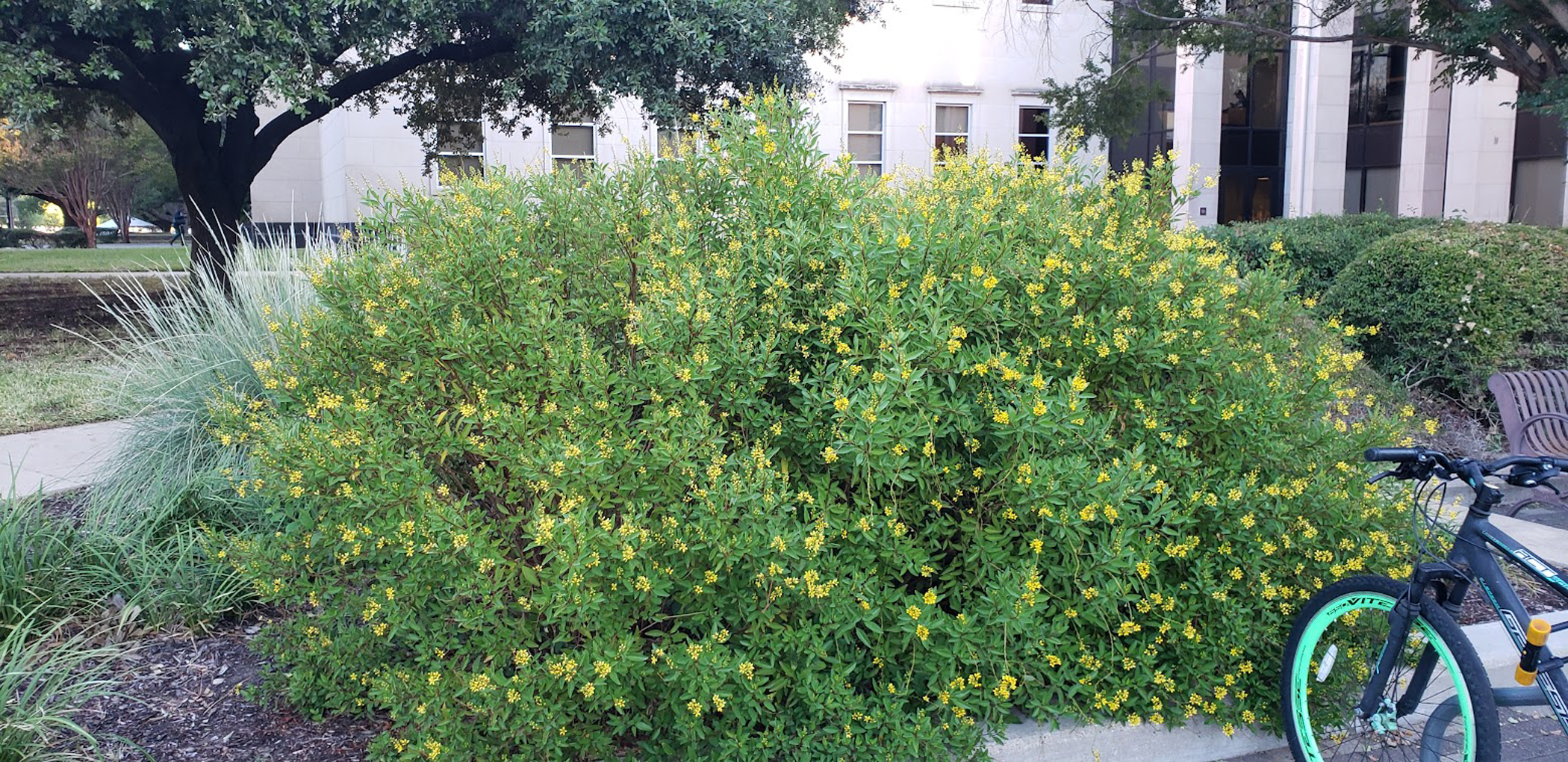
By Jeff Floyd
Certified horticulturist and arborist
Plants that hug the foundations of homes and buildings form a fundamental tier of landscape elements. Shrubs are a predominant feature of these foundation plantings. Historically, shrubs were placed along the entire length of a wall or walls spanning the base of a home to hide its unsightly foundation. One medium-sized shrub that should be catching our eye for this purpose in Texas landscapes is called Thryallis.
Thryallis is evergreen in its native region of central America but does drop its leaves in a hard Texas winter. The coldest weather may even cause the top of the plant to die back entirely, but its root-hardy nature allows it to regrow in place as soils warm up in the spring. Thryallis is one of those plants that have endured the last ten years of rollercoaster weather in the Permian Basin.

It produces small yellow flowers throughout the entire growing season. Its olive-green foliage is loosely put together. The effect provides a loose surface compared to the classic tightly sheared yaupons so familiar to us in West Texas landscapes. When designed well in the same foundation planting, these two plants complement one another with a textural change that is not too sudden.
Thryallis grows four to six feet in height and about four feet in width. It tolerates any well-draining soil in the southern United States. Thryallis is extremely drought tolerant and should not be overwatered. Its yellow flowers work well with salvia, Texas sage, iris, plumbago and other blue and purple-blooming plants.
Over time, there has been a small shift from designing large swaths of plants along foundations to the more conservative approach of placing accent plantings at the corners and entryways of a home. Thryallis would be an excellent low-maintenance choice for this very purpose. When planted this way, it visually softens the hard corners of a home and allows the viewer’s eye to flow smoothly across the facade.



